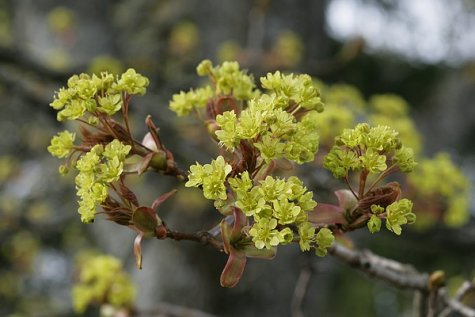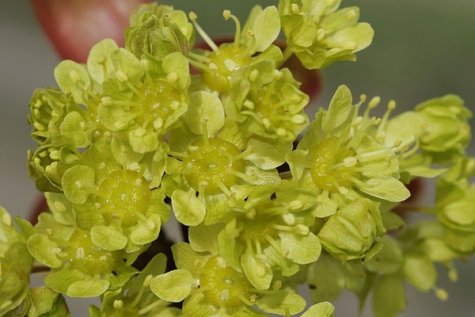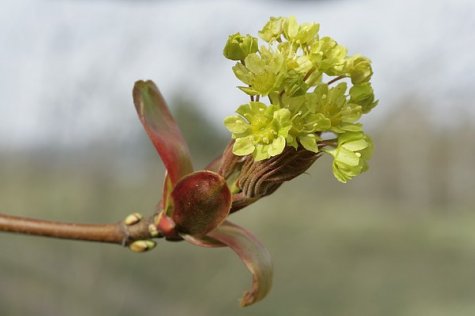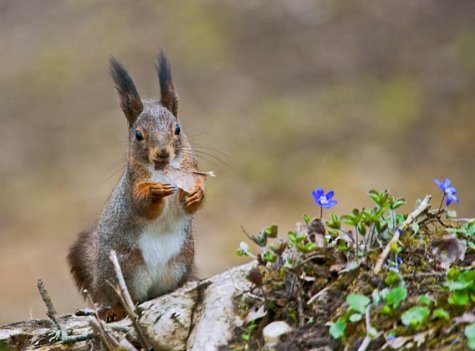Spring starts with maple flowering
Photos: Arne Ader
Translation: Liis
Maple flowers
Maple; Norway maple Harilik vaher Acer platanoides
In Tartu maples are flowering from Monday, April 21st; South Estonia has twenty degrees of warmth in daytime …
With the flowering of maples the phenological full spring begins.
A maple in full flower is a thing really worth seeing. On warm sunny spring days we hear from the trees the hum of bees who oblivious of themselves collect nectar and the greenish pollen. From a large maple bees can get up to a bucket of honey.
Detailed image of maple flower; the nectary, shiny from nectar, is visible as well as the well developed stamens. All visible flowers seem to be male
The maple comes into leaf after flowering or begins to leaf during flowering
In nature we seldom find pure maple forests – only in the West Estonian islands, for instance the Kõinastu islet, a few mainland marsh islets and in the area between the North Estonian cliff shore (klint) and the sea. Elsewhere in nature we see maples in mixed forests with other tree species: oak, ash, elm, lime, sometimes with birch or spruce. Dry and poor soils don’t suit maples. As young it tolerates shade and winter frosts, but the trees can be damaged by strong night frosts during the flowering period.
Maples only start producing seeds at 25 years of age; the seeds germinate very well – nine seeds out of ten. After the snow has melted, the spilled seeds germinate in masses and as the photo below shows, they are nourishing and juicy mouthfuls.
Looduskalender.ee viidakogu
| Teised kaamerad | Videod | |
| Must-toonekure videod Lõuna-Belgiast | Kurgede ränne (2008-2010) | Korallnarmik (2011) |
| Linnukaamerad Hollandis | Kotkaste ränne (2008-2010) | Kure TV (2011) |
| Raivo rännakud (2007) | Kure TV 2 (2011) | |
| Tooni rännakud (2007) | Merikotka TV (2010-2011) | |
|
|
5. aastaaja TV (2010)
|
|
| Konnakotka-TV (2009-2011) | ||
| Seire-TV (2009) | ||
| Kure-TV (2009) | ||
| Talvine kotka-TV (2008) | ||
| Sea-TV (2008-2009) |












